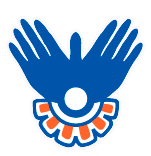| TIPO DE BECA | CODIGO | PAIS | LUGAR | ACTIVIDAD | INICIA | TERMINA |
|---|---|---|---|---|---|---|
| Corto plazo |
OH-H08 | ALEMANIA | Freiberg | CONS,STUD | 25/08/2018 | 08/09/2018 |
European Heritage Volunteers - Technical heritage at Freiberg mining area | OH-H08 | 2018-08-25 - 2018-09-08 | CONS,STUD | Age: 18 - 35
European Heritage Volunteers
Work: The volunteers will support the new roofing of the historic wooden shingle roof of the shaft and administration building of the Alte Elisabeth mine. They will produce a kind of handmade shingles that are traditionally used in the Ore Mountains region. Volunteers will split of the shingles from logs (spruce or larch), will provide them with a groove. The participants will be qualified to produce wooden shingles and get familiar with the typical regional roofing. In addition, the volunteers will support the roofing works that are carried out in the same time. The works will be lead by a carpenter who is specialised in traditional wooden shingle roofing. At Lichtloch VII the participants will restore the capping of the wheel chamber with gneiss stones. The capping of the wall remains have suffered from weathering and several stones are missing; the arches of the openings are not preserved. The participants will sort and square the rubbles stones for the walls, prepare the surrounding area, reconstruct the arches and complement missing parts. The stones will be embedded in mortar and the recessing joints will be filled in using small stones to supplement the walls of the wheel chamber up to twenty centimetres and grout the capstones for the brick walls top edge.
Accomodation and food: shared rooms with beds, warm showers, toilets, The meals will be prepared together as they are part of the community life, what means that everybody will be responsible for the meal at least once during its stay. So it would be very nice if you could bring typical recipes from home in order to introduce each other to the preparation of food from all over the world.
Location: Freiberg
Location and Leisure: In 1168, the first discovery of silver ore in Freiberg had a profound and lasting effect on the development of the region. Located in a Central European mountain range the region has played a major role at certain times in the output of tin, silver, cobalt, caolin and uranium in a global context. The rich ore deposits gave the region its name Erzgebirge (Ore Mountains). Mining was for centuries the key industry forming an exceptional transboundary mining cultural landscape with all its typical surface and underground installations, mining towns and natural features as well as the associated intangible values. The mine Alte Elisabeth in Freiberg is part of the Himmelfahrt Fundgrube mining system, the largest ore mine in the Freiberg area and the most productive mine in the history of the Ore Mountains. The Alte Elisabeth mine’s surface buildings are located on a large waste heap mesa tiered since the early 16thcentury overlooking Freiberg town. In 1848, the shaft was given a steam gin system, which has been preserved along with most of the equipment, including the historic steam engine. The building complex covers the hoisting house, machine house and power house, the chimney with smoke flue, the sorting house added to the hoisting house, which was since 1856 used as a prayer room, and the mining forge building. In 1936 a separate building was erected to house the Schwarzenberggebläse, a blowing engine, from 1831, a masterpiece of mechanical engineering built in gothic style. The heritage-listed underground workings of the Alte Elisabeth, with its important water wheel chamber, are connected to the headings at other shaft complexes at various levels. Soon after mining ceased in 1913, the Alte Elisabeth shaft complex including selected underground areas was taken over by the Freiberg Mining Academy for teaching purposes. The Rothschönberger Stolln (Rothschönberg drainage gallery) is regarded worldwide as the final point of the technological development of trans-regional water-adits. Constructed from 1844 on, it is the most important and deepest lying adit system of the Freiberg mining district still in operation today. Eleven Lichtlöcher (shafts) were deepened to advance the gallery. Located on a large heap, the Lichtloch VII is a well-preserved example of these shafts including the hoisting house with adjacent wheelhouse, the mine forge and the powder house. Today, a local mining club carefully maintains the site and presents it to the public.
Train/Bus station: Freiberg
Requirements: Motivation letter related to the project and CV + photo required
Language: eng,ger
Extra Fee: 0
Motivation letter related to the project and CV + photo required
-
DISPONIBLE PARA
-
DOCUMENTOS ADICIONALES REQUERIDOS
- Carta de Motivos Específica en Inglés descarga aquí llénalo y guárdalo como PDF para adjuntarlo en tu aplicación
- CV en Inglés
-
VIVE FINANCE
Esta beca cuenta con financiamiento para boleto de avión
-
VIVE ASSIST
Adquiere tu seguro de viajero, VIVE ASSIST te ofrece tarifas preferenciales para adquirir tu seguro de viajero, asistencia de viaje 24/7, médica, personal y legal. Así mismo este programa te apoya a resolver todas las dudas sobre tus traslados al lugar donde fuiste aceptado, te dan orientación sobre vuelos, trenes y todo lo que necesites saber sobre tu viaje.

